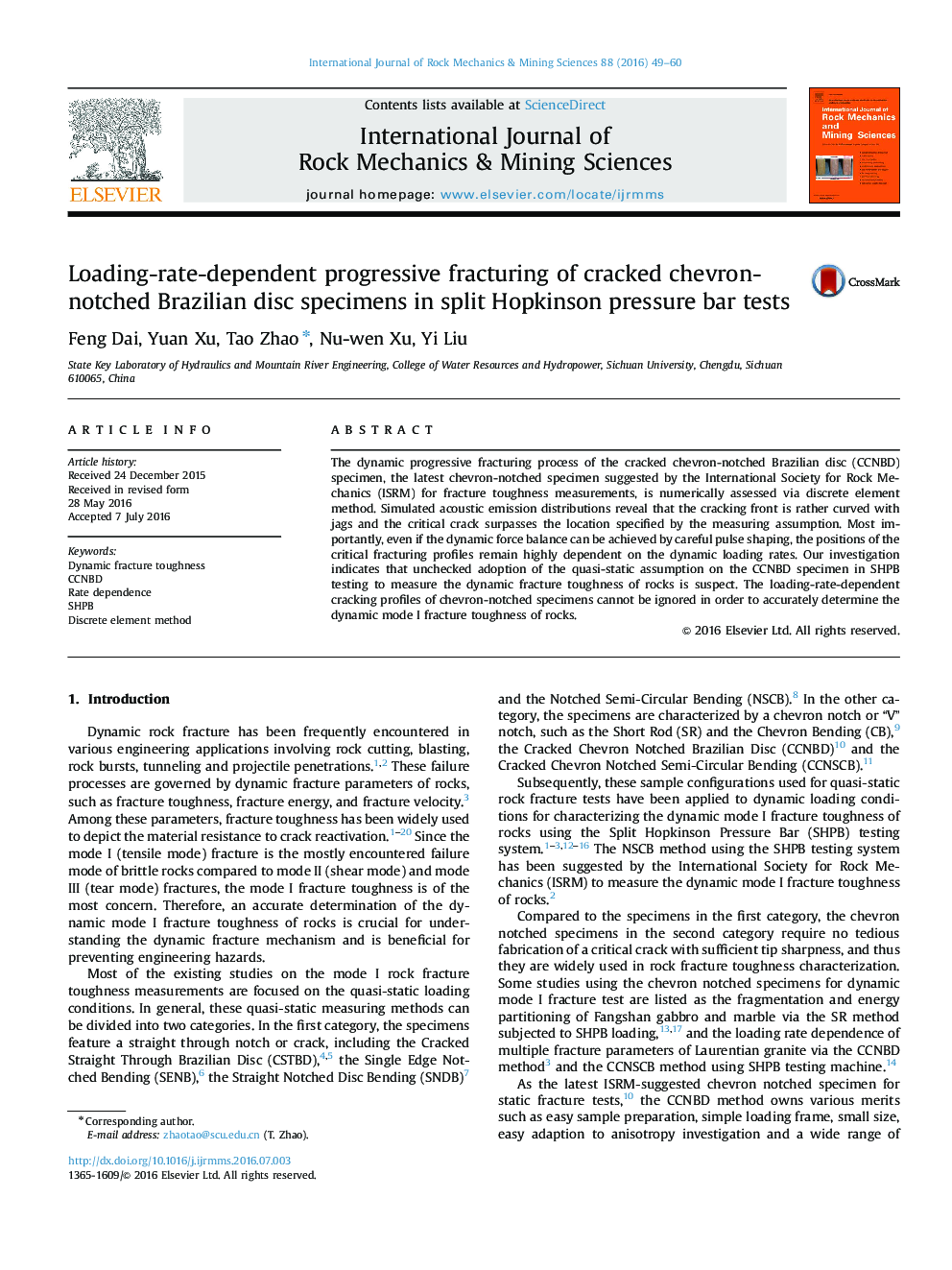| Article ID | Journal | Published Year | Pages | File Type |
|---|---|---|---|---|
| 808914 | International Journal of Rock Mechanics and Mining Sciences | 2016 | 12 Pages |
•3D progressive fracture processes of CCNBD specimens in SHPB testing are numerically assessed for the first time.•The critical fracturing profiles remain highly dependent on the dynamic loading rates even if dynamic forces are balanced.•The cracking front of the CCNBD specimen is not straight-through but curved.•Unexamined adoption of the quasi-static assumption on the chevron notched specimens to the dynamic measurements is uncertain.
The dynamic progressive fracturing process of the cracked chevron-notched Brazilian disc (CCNBD) specimen, the latest chevron-notched specimen suggested by the International Society for Rock Mechanics (ISRM) for fracture toughness measurements, is numerically assessed via discrete element method. Simulated acoustic emission distributions reveal that the cracking front is rather curved with jags and the critical crack surpasses the location specified by the measuring assumption. Most importantly, even if the dynamic force balance can be achieved by careful pulse shaping, the positions of the critical fracturing profiles remain highly dependent on the dynamic loading rates. Our investigation indicates that unchecked adoption of the quasi-static assumption on the CCNBD specimen in SHPB testing to measure the dynamic fracture toughness of rocks is suspect. The loading-rate-dependent cracking profiles of chevron-notched specimens cannot be ignored in order to accurately determine the dynamic mode I fracture toughness of rocks.
